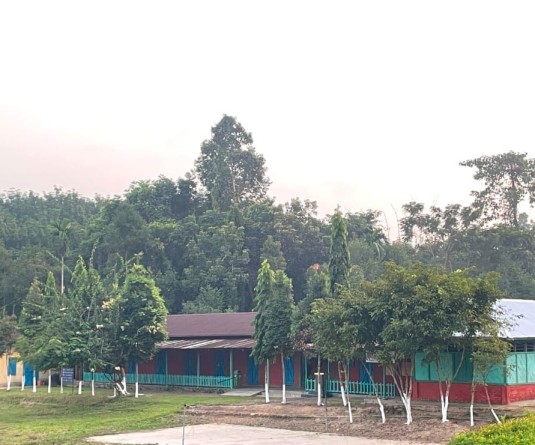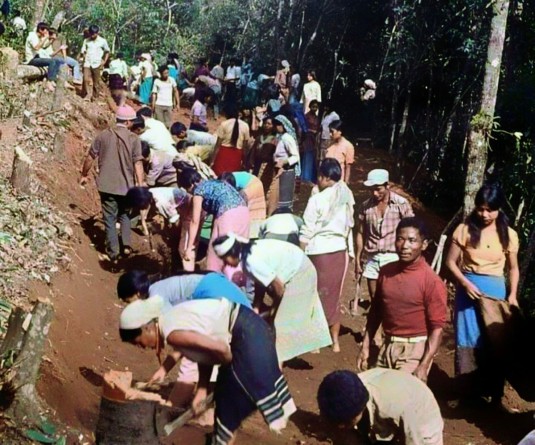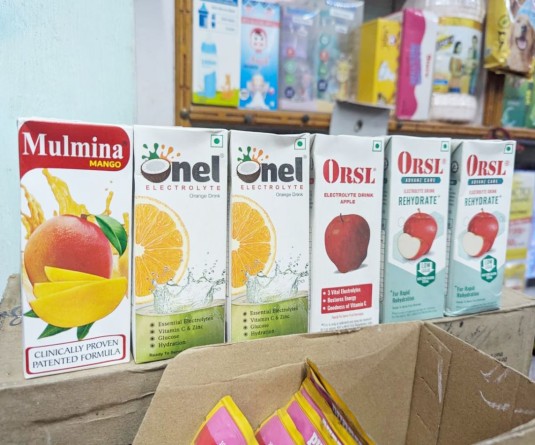A file photo of half constructed border pillars at the Indo Myanmar border in ITC Dan, Pangsha under Noklak district. (Morung File Photo)

New regulation at Indo-Myanmar border includes QR code and biometrics
Morung Express News
Dimapur/ITC Dan/Longwa | February 14
A year after the suspension of the Free Movement Regime (FMR) along the Myanmar border, the Union Ministry of Home Affairs (MHA) has introduced a new protocol to regulate the movement of people living within 10 kilometers on either side of the mostly unfenced international border.
The scrapping of the FMR was officially announced by Union Minister Amit Shah on February 8, 2024, citing concerns over “internal security of the country” and the need to “maintain the demographic structure of India’s northeastern states bordering Myanmar.”
India shares a 1,643-kilometer border with Myanmar in the Northeast, passing through Mizoram (510 km), Manipur (398 km), Nagaland (215 km), and Arunachal Pradesh (520 km).
Putting the decision of completely scrapping the FMR agreement on hold, the MHA has opted to issue new guidelines aimed at “respecting the sensitivities of the border population.” These guidelines standardize documentation procedures and increase security at the border crossings.
According to the new regulations, finalized on December 6, 2024, the Assam Rifles have been tasked with issuing border passes and conducting security checks at the designated Indo-Myanmar border crossings. The border passes are valid for a stay of up to seven days.
For individuals entering India from Myanmar, they must report at designated points and complete documentation that includes a photograph, QR code pass, and biometric data. The MHA has assigned the respective state police forces to verify the details on these border passes, and any violations will result in legal action.
A report by The Hindu stated that 22 out of the 43 crossing points along the Myanmar border have begun functioning under the revised FMR agreement. The remaining 21 crossing points will be operational in a second phase, the report added.
At least 10 border gates have been activated to regulate movement in the 10-kilometer area on the India-Myanmar border. Five gates are now operational in Mizoram and Nagaland, while two gates have opened in Arunachal Pradesh. The report, citing a senior government official, stated that this arrangement aims to allow border residents to visit relatives or families across the border without requiring a visa or passport. However, these individuals will need a border pass, and their biometrics will be recorded. The details and biometric information will then be uploaded to a centralized portal to determine if the person is on a “negative list.”
The Morung Express has confirmed that the new guidelines have come into effect at least at two of the five reported border crossings in Nagaland- one in Longwa village in Mon district and the other at ITC Dan in Noklak district.
Longwa is unique in that the Indo-Myanmar border runs right through the house of the village chief, the Ang (King). With a population of around 6,000 and approximately 990 households, Longwa has been at the center of protests since the announcement of the FMR's suspension. On February 3, 2024, the Konyak Union organized a public rally in Longwa to protest the scrapping of the Free Movement Regime and the proposed fencing of the Indo-Myanmar border.
A student leader from Longwa informed The Morung Express that security personnel stationed at Longwa have imposed restrictions on individuals traveling to and from Myanmar. “The Assam Rifles have set up a registration booth at their camp to issue border passes for those crossing into Myanmar or entering India,” the student leader confirmed.
In addition to obtaining a border pass, those wishing to cross or enter the Indo-Myanmar border must now comply with a series of new formalities. These include providing personal information, such as mobile phone numbers, residential addresses, and travel destinations. A photograph is also taken as part of the process to track and record border-crossers.
According to Pangsha villagers, who spoke with The Morung Express, the new guidelines, which include biometric data collection, have been in effect at ITC Dan in Noklak district since the first week of January 2025. The cross-border checkpoint, located just adjacent to the now-defunct International Trade Centre (ITC) building, is manned by personnel from the 14th Assam Rifles.
At ITC Dan, the boundary pillars demarcating the two countries are situated in unusual locations. One pillar stands in the middle of the village’s public ground, while another is placed directly in the center of a helipad constructed by security forces inside their camp.
Growing unease
The implementation of these new border guidelines has been viewed with resentment and apprehension from local communities, with growing unease about what the future holds.
An observer from Longwa told The Morung Express that the number of people crossing into India from the Naga villages in Myanmar has significantly decreased since the new regulations were enforced.
“The decline in movement is largely due to people feeling affronted and their pride hurt. That they have to seek permission from outsiders to travel or move freely on their own land,” the observer explained.
Similar concerns were raised at ITC Dan. In early December 2024, a situation arose when a vehicle attempting to cross into Myanmar to collect timber and firewood for a community event was halted by security forces and denied access.
Feeling slighted, the villagers retaliated by cutting the water supply line to the Assam Rifles camp. The situation was resolved only after the officer in charge intervened and pacified the villagers, leading to the restoration of the water supply.






